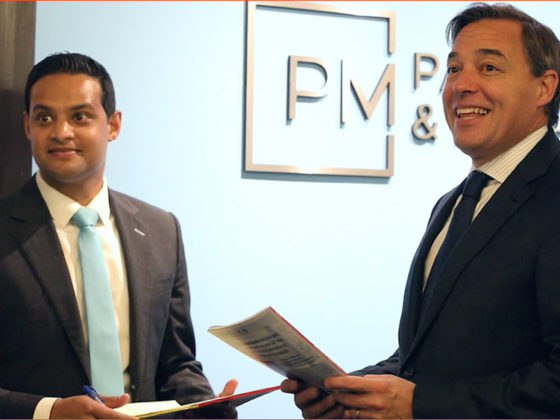If you have been reading the news about the legal industry for the past few years, you’d think that being a lawyer is about the worst career move in the world. While we agree that there is reason for pessimism in many areas of law, it’s also an exciting time for lawyers. We’ve seen that when lawyers are facing pressure, innovative law firms will find ways to become the new industry leaders.
The New Republic’s in-depth analysis “The Last Days of Big Law” is great overview of the troubles facing many law firms. But it’s not all doom and gloom. In fact, Big Law will never be over – there will always be a need for legal services that only large law firms can deliver. But there is no question that changes are happening. The difference is just that one era of Big Law is ending, and a new order is yet to emerge.
It’s Hard Out There
Being an attorney has always been a difficult and cut-throat business. Consider the portrait of turn-of-the 20th century lawyers in Unequal Justice: Lawyers and Social Change in Modern America by Jerold Auerbach.
…two-thirds of the lawyers in New York City earned less than $3,000 annually and two thousand Chicago lawyers had incomes lower than union brickmasons. As Charles Evans Hughes observed of the New York bar at the close of the nineteenth century: “Those highly privileged firms seem to hold in an enduring grasp of the best professional opportunities….”
The law has always been a closed world in which established, well-connected lawyers and large law firms dominate many practice areas. But consider the portrait of the upstart and insurgent law firms of mid-century America in Malcolm Gladwell’s Outliers: The Story of Success.
In Outliers, Gladwell described the attorneys who succeeded in the hyper-competitive post-war legal world in New York like Joe Flom. Flom says when he started, his attitude to taking new clients was, “whatever came in the door!”
But because Flom took business other firms wouldn’t touch, his small firm eventually became Skadden, the new model of Big Law success. At that time, M&A activity was considered beneath the purview of New York’s white shoe law firms, so a young Joe Flom eagerly took that work.
“For a period of almost thirty years, if you were a Fortune 500 company about to be taken over, or trying to take over someone else, or merely a bigshot in some kind of fix, Joseph Flom has been your attorney and Skadden Arps has been your law firm,” says Gladwell.
Becoming Big Law
What does this have to do with today’s law firms? Every generation is different, and the young Joe Floms of the world are likely going to be shut out of the lucrative M&A game. But there are market inefficiencies that can either crush your firm, or provide new direction. The law firm that can succeed is the firm that can find inefficiencies and turn those into opportunity.
The obvious market inefficiencies today are built into most types of litigation. The reason law firms are suffering is that clients are not willing to pay the absurd cost of litigation in most cases.
Consider the case, Tampa Bay Water v. HDR Engineering, Inc., in which the plaintiff charged $3.1 million in electronic discovery costs for the collection, storage, formatting, coding and organization of electronically stored information. Judge James D. Whittemore said that “the electronic discovery costs incurred by HDR were certainly reasonable and necessary in managing this complex, document-intensive case.”
He calculated that the total electronic discovery costs was $0.18 per page for a single copy of the 17 million pages of documents involved in this case. That may seem reasonable, but consider that this $3.1 Million award represents a little more than ten percent of the total value of this case, $30 million. Or that the defendant was awarded $9,249,219.85 for attorneys’ fees (almost everything they asked for), and another $7,798,186.22 for other costs incurred, for a total cost and fee award of $20,147,406.07.
This is why People Hate Lawyers
This was a long, complicated, case in which the plaintiff rejected a mediated settlement where they would have received a $30 million payment and instead went to trial, where their claim was rejected. The business of law is simply not sustainable if it costs $20 million for one side to litigate a matter that is worth $30 million.
The next generation Big Law firms are going to be the ones that find a way to slash these costs and resolve disputes for a sustainable fee. What incentive do clients have to ever go to trial if any potential settlement goes to their attorneys?
Storage and hosting costs are the most obviously ripe for slashing. eDiscovery vendors still act as if they are providing a limited resource that only a high-priced experts can provide. At Nextpoint, we recognized a long time ago that eDiscovery is a commodity, and have offered predictable and easy-to-understand commodity pricing, pass-through costs to your clients.
Law firms have been relying on the same old technology for thirty years. Most firms are using software that doesn’t scale to meet today’s challenges in a cost-effective manner. Meanwhile, the rest of the world has embraced the cloud- technology that allows for low-cost storage, mobile access for remote workers, and efficient use of resources.
That is just one of the obvious ways in which law firms can slash overhead and stop wasting money. It will allow lawyers to focus on providing better legal services without worry that discovery costs will force their client to settle their dispute before it can get a hearing in court. It’s just one way that the next generation of law firms will redefine the business of law.






